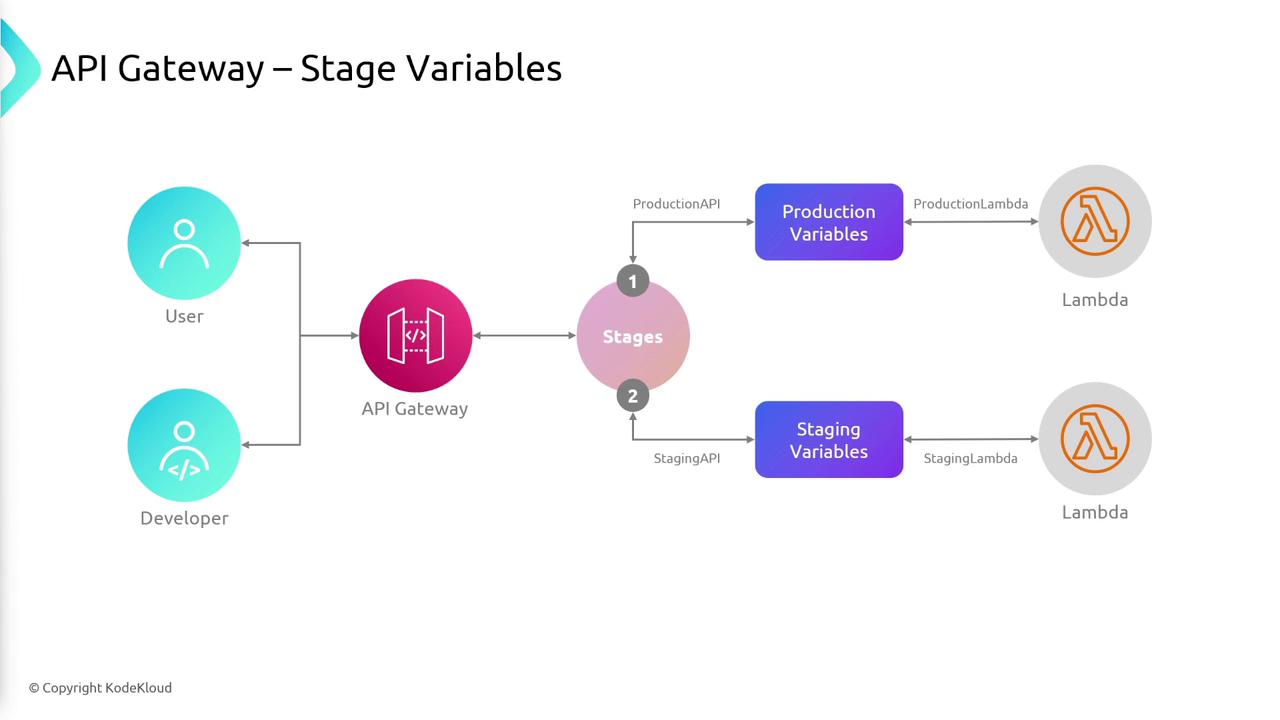AWS Certified Developer - Associate
API Gateway
Stages Deployments
In this lesson, we explore the API development lifecycle stages and demonstrate how deployments are managed across various environments. Understanding these stages is crucial for efficient API management and seamless deployment.
API Development Lifecycle
The API development process typically involves three main stages:
Development Stage
During development, you configure endpoints, integrate external services, deploy and test the API, perform performance tests, and debug internally. Any issues identified in this stage are promptly addressed by updating the API.Staging (QA) Environment
Once the API functions as expected in development, it is deployed to a staging or QA environment. This stage provides a setting for iterative testing and feedback collection.Note
This environment acts as a final checkpoint to verify that changes on the API do not disrupt existing functionalities before moving to production.
Production Environment
In production, the API is fully optimized for end users. Specific configurations such as increased rates, enhanced scaling, strict limits, and optimized caching are implemented. Additionally, production includes robust monitoring systems to promptly detect and resolve any operational issues.
API Gateway and Stage Variables
API Gateway simplifies the management of multiple API versions by mapping each environment to a unique stage. For instance, a production stage (e.g., /prod) maps to one Lambda function, while a development stage (/dev) is kept separate to ensure that ongoing tests do not affect live users.
Since each environment might require distinct settings, API Gateway introduces stage variables. These variables allow dynamic, environment-specific configuration without inadvertently affecting other stages. For example, a stage variable in production might direct traffic to a particular Lambda alias, whereas the staging environment could point to a different alias of the same function.
The diagram below illustrates the API lifecycle, highlighting key tasks and processes at each stage:

This visual clearly outlines the progression from development through staging to production, emphasizing the unique role of each environment.
The following diagram demonstrates how API Gateway employs stage variables to manage interactions between different environments. It ensures that production and staging requests are accurately routed to their respective Lambda functions based on custom parameters:

Note
The use of stage variables is critical for maintaining distinct environment configurations under a unified API Gateway. This approach minimizes risks by isolating production from potentially disruptive changes in development or staging.
Summary
Effective management of stages and deployments is essential for a smooth API lifecycle. By leveraging features such as stage variables in API Gateway, teams can customize configurations across environments while ensuring stability and high performance in production.
For more details on API management and advanced deployment strategies, refer to our comprehensive guides and related documentation.
Watch Video
Watch video content